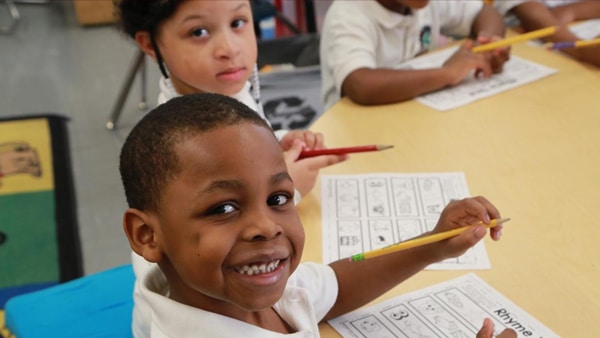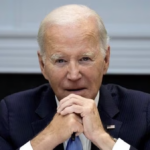We need to move from the abstract idea of “education reform” and toward the practical idea of “saving the children.”
When I first read about the 23 Baltimore City Schools in which not a single one of the more than 2,000 students was proficient in math, I thought the time had come to shift our focus about education. We need to move from the abstract idea of “education reform” and toward the practical idea of “saving the children.”
As I focused on the absolute failure of the Baltimore City Schools, I learned it was despite the $21,600 spent per pupil (the fifth highest dollar to student spending rate of any big city school in America). When you consider that a class of 20 ought to have $432,000 in resources, the failure to perform is breathtaking.
I initially focused solely on the political-educational-bureaucratic machine in Baltimore City, which spends $1.6 billion each year. This vast system of hiring and spending dwarfs the resources available to reformers and alternative education providers. In effect, Baltimore City is trapped in a fortress of mediocrity, failure, and total lack of accountability. No matter how bad the schools are, it is virtually impossible to reform the schools. The political muscle of the teachers’ union is just too massive.
Moreover, as several people have driven home to me recently, reforming the schools is inadequate. By itself it would not save the children.
A school-centered approach ignores the depth of the various challenges which threaten the future and in some cases the lives of children in Baltimore City.
As I thought about what saving the children would really take, I was reminded of the Eisenhower Principle. When asked about challenges he faced in World War II, Gen. (later President) Dwight Eisenhower said: “Whenever I run into a problem I can’t solve, I always make it bigger. I can never solve it by trying to make it smaller, but if I make it big enough, I can begin to see the outlines of a solution.”
Based on this principle, which Eisenhower applied in World War II and the White House, the challenge of saving the children becomes the challenge of saving the poorest neighborhoods in Baltimore City.
We underestimate the challenge of saving the children. They are threatened by parents who often have no interest in their children’s learning. And they are growing up in environments rife with crime, substance abuse, and general lawlessness.
These children face a heightened threat of random and directed violence. Leaving school with no marketable skills increases the likelihood of earning a living through crime. Simply living in a poor neighborhood increases the dangers of becoming a victim — if not a perpetrator.
Children in really poor neighborhoods have few role models from whom to learn productive and useful life skills. Instead, they see criminals, violence, drug dealing, prostitution, and people living passively, dependent on the government for food, housing, medical services, and modest amounts of money. All of this is compounded by schools that warehouse them during childhood but fail to teach them anything.
The betrayal of poor children by government policies and institutions is extraordinary. It is not a matter of money. As I mentioned, the per student expenditure of the Baltimore City Schools is enormous. If you added in the cost of food stamps, public housing, Medicaid, and various government programs that came out of the supposed “Great Society,” the amount of money available is astonishing. Clearly, this isn’t a problem which can be solved with government spending. We’ve been doing that for decades: It doesn’t work.
The challenge was analyzed by Marvin Olasky in “The Tragedy of American Compassion” and Charles Murray in “Losing Ground.” They proved some 40 years ago that the entire modern liberal effort to help the poor by keeping them dependent– reinforced by immediate financial subsidy — is destructive. The welfare state undermines ambition, learning to work and achieve, and going through the difficult process of independence.
Start with the $21,600 per student in the schools in which zero students can do math. The current system works for the teachers’ union and the bureaucrats, because the pay checks come every week no matter how bad the outcomes. It is a perfect system for paying bureaucrats and a disaster for poor children.
What if we divided the $21,600 differently? With 180 school days a year, what if we paid the students $10 a day for every day they showed up? What if we then paid an additional $10 a day if they did their homework? What if we then had twice-a-year $500- student bonuses for those who were performing on grade level?
If every student performed at 100 percent, we would have invested $4,600 directly in the student. That would leave $17,000 per student for teachers, room, electricity, administrators, etc. That would still come to $340,000 in a classroom of 20.
Similarly, since the poorest neighborhoods are large cost centers for government spending, we should resurrect the President Ronald Reagan-Congressman Jack Kemp concept of enterprise zones. Any investment which led to job creation for local residents would be tax free for a decade. Suddenly, there would be a realistic expectation of jobs.
Further, there should be a dramatic reduction in red tape for starting small businesses, so the newly educated graduates could be encouraged to become entrepreneurs and start their own businesses.
Finally, the James Q. Wilson model of Broken Windows policing, which radically reduced crime in New York City under Mayor Rudy Giuliani (Michael Bloomberg corrupted the concept into stop-and-frisk), should be enforced in Baltimore City, so the students could be safe and the desirability of honest behavior over criminal behavior would be dramatically higher.
The current school board is owned by the teachers’ union. The mayor is afraid of the teachers’ union. The Maryland legislature is afraid of the teachers’ union.
If the children are going to be saved, it will have to start with the United States Congress and the federal government deciding that destroying the lives of children to protect a failing bureaucracy is wrong.
Otherwise, we will not save the children.

Newt’s Latest Articles:
- Republicans Want to Help Americans Leave Poverty
- Democrats Seek to Subvert Democracy Itself
- Speaker Mike Johnson is Doing an Excellent Job
- Enjoying Life by Enjoying Nature this Earth Day
- Biden and the ‘Blame America First’ Democrats
Newt’s Latest Podcasts:
- Newt’s World – Episode 687: Reforming the Criminal Justice System

- Newt’s World – Episode 686: Iran Attacks Israel

- Newt’s World – Episode 685: Welfare Reform

- Newt’s World – Episode 684: Funding the War in Ukraine

- Newt’s World – Episode 683: Student Loan Debt Forgiveness

Get Newt’s Latest Book:








